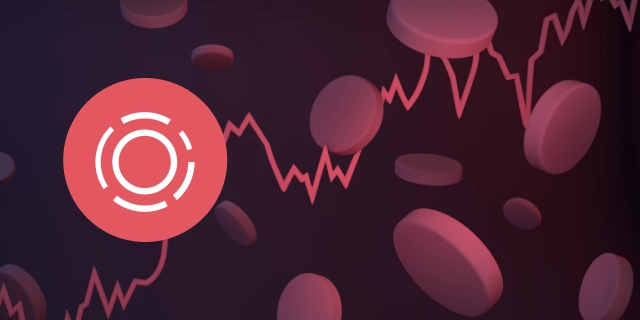Exchange your crypto now
What Is the Solana price prediction today
AT A GLANCE
- In 2024, Solana price is expected to reach $415.7720020330542, according to some experts
- 2025 promises to be turbulent, with prices ranging from $57.08273493869335 to $348.61241694702005, with PricePrediction.net predicting a breakthrough leading to a price rise to $348.61241694702005
- By 2030, SOL price can hit $415.7720020330542
Solana fundamental analysis
Solana is a blockchain platform designed to provide fast and scalable decentralized applications (DApps) and crypto projects. It aims to address some of the scalability issues faced by other blockchain networks, such as high transaction fees and slow confirmation times.
Solana was founded by Anatoly Yakovenko. He is a software engineer with a background in distributed systems. Prior to founding Solana, Yakovenko worked at Qualcomm, Dropbox, and Mesosphere. He launched Solana intending to address some of the scalability challenges faced by existing blockchain networks, such as slow transaction speeds and high fees.
The development of Solana started in late 2017, and the network was officially launched in March 2020. Anatoly Yakovenko and the Solana team aimed to create a high-performance blockchain platform capable of supporting decentralized applications and handling a large number of transactions per second.
The launch of the Solana network involved a series of steps, from the initial development to the public release. Before the mainnet launch, Solana went through multiple testnet phases. Testnets are essentially testing environments where developers can experiment with the platform, identify and fix bugs, and ensure the stability and security of the network. Solana conducted several iterations of its testnet to refine the protocol and address any issues that arose during testing.
To fund the further development of the Solana network, the project conducted a token sale in March 2019. This sale allowed individuals and institutional investors to acquire SOL tokens, which are native to the Solana blockchain.
The mainnet beta of Solana was officially launched in March 2020. This marked the transition from testnet to a live and operational blockchain network. During the mainnet beta phase, the network underwent additional testing and optimization while allowing developers to start building and deploying decentralized applications (dApps).
Following the mainnet launch, Solana focused on growing its ecosystem by attracting developers, projects, and partnerships. The platform's emphasis on high throughput and low transaction costs appealed to various projects seeking a scalable blockchain solution.
Tour de SOL (June 2020) was a community-driven incentivized testnet competition designed to stress-test the Solana network. Participants had the opportunity to earn SOL tokens by helping identify and fix bugs in the network.
Solana 1.0 was a major upgrade that brought improvements to the protocol's stability and security. It included enhancements to the network's stability and features like archivers, which help maintain a historical record of the blockchain.
The Hydra upgrade that took place in March 2021 aimed to enhance scalability by introducing the concept of "Hydra Head" sidechains. These sidechains can process transactions independently, contributing to overall network scalability. The Hydra upgrade introduced the concept of "Hydra Head" sidechains. These sidechains operate independently and contribute to the overall scalability of the Solana network by processing transactions in parallel.
The Sealevel upgrade in May 2021 focused on improving the network's programmability and developer experience. It introduced support for more programming languages and tools, making it easier for developers to build on the Solana blockchain. It was followed by the Merlin upgrade which included improvements to the network's efficiency and security. It introduced a new feature called "Seeds," which helps secure the network by making it more resistant to certain types of attacks.
The Solana blockchain utilizes innovative technologies, including a unique consensus algorithm called Proof of History (PoH), to achieve high throughput and low transaction costs. Proof of History (PoH) is a consensus mechanism that facilitates the agreement of the blockchain by validating the chronological order of events. This innovative approach is employed to encode the progression of time directly into the blockchain ledger.
Utilizing PoH, Solana's blockchain achieves consensus by establishing a reliable chronological sequence of events. This method not only enhances the security and accuracy of the ledger but also contributes to the platform's overall efficiency. By incorporating a verifiable timeline, PoH minimizes the time validators spend reaching consensus and significantly improves the speed and performance of transaction processing.
Solana is known for its high transaction throughput, which is achieved thanks to the combination of the Proof of History (PoH) consensus mechanism with a Proof of Stake (PoS) mechanism to achieve fast transaction processing. Solana also employs a Tower BFT consensus algorithm that enhances the security and finality of transactions on the network. It provides quick confirmation of the validity of transactions.
Solana uses a unique approach to parallel processing called Gulf Stream. This allows the network to process multiple transactions simultaneously, significantly improving throughput and reducing confirmation times.
Solana supports the development of decentralized applications through smart contracts, allowing developers to create a wide range of applications on the platform.
The platform aims to provide low transaction costs, making it more affordable for users and developers to interact with the blockchain.
Solana has actively sought to build a robust ecosystem by attracting developers and projects. The platform has gained popularity for hosting a variety of decentralized applications, decentralized finance (DeFi) projects, and non-fungible tokens (NFTs).
The SOL token is the native cryptocurrency of the Solana blockchain. It plays a crucial role within the Solana ecosystem and is used for various purposes. SOL serves as the utility token of the Solana blockchain, providing access to the platform's features and functionalities.
SOL holders can participate in staking by locking up their tokens in the network. Staking involves contributing to the security and operation of the blockchain in exchange for rewards. Validators responsible for validating transactions and creating new blocks are chosen based on the amount of SOL they have staked.
SOL holders may have governance rights, allowing them to participate in decision-making processes related to the development and upgrades of the Solana protocol. Governance features can include voting on proposals for network improvements and changes.
SOL is used to pay for transaction fees on the Solana network. Users and developers pay a certain amount of SOL tokens to process transactions and interact with smart contracts.SOL tokens have been used in various token sales and fundraising events by projects building on the Solana blockchain. Investors can acquire SOL tokens during initial coin offerings (ICOs) or token sales to support and participate in the growth of the Solana ecosystem.
To encourage the growth of the Solana ecosystem, the protocol may distribute SOL tokens as incentives to developers, validators, and other participants who contribute to the network's development.
SOL is often used as collateral in decentralized finance (DeFi) applications on the Solana blockchain. Additionally, SOL may be involved in transactions and activities related to non-fungible tokens (NFTs) and other decentralized applications (DApps).
SOL is listed and traded on various cryptocurrency exchanges, allowing users to buy, sell, and trade the token. The price of SOL can be influenced by market demand, speculation, and overall developments within the Solana ecosystem.
The allocation of SOL tokens is as follows: 16.23% was allocated to the initial seed sale, 12.92% was reserved for the founding sale, 12.79% of SOL coins were distributed among team members, and 10.46% of tokens were designated for the Solana Foundation. The remaining tokens have either been released for public and private sales or are yet to be introduced to the market.
The total supply of SOL is 567,727,003 SOL, and as of January 22, 2024, the circulating supply is 433,025,699 SOL.
During the initial seed sale on April 5, 2018, the Solana price was $0.04. Considering the recent all-time high (ATH), this represents an impressive 5400X return on investment (ROI).
Solana live price chart
In the middle of July 2023, the Solana token price chart finished the period of growth after reaching $27.39 on July 17. From this point, the value of SOL started declining. During the first week of the downtrend, the price of the Solana token reached $23.38, then it recovered to $25, but after a day of keeping this price level, Solana continued going down.
By the beginning of August, the SOL price reached $23.19, and then till the middle of the month, the price chart was going down again. The downtrend continued without any interruption till the middle of September when the value of SOL reached around $17.7. Then again the token recovered some of the losses, reaching $19.48 by September 22. After a short recovery that took just a few cents from the price of the Solana native token, the price chart started bullying again, this time showing more gains.
By the beginning of October the price of Solana reached $23.37, but in the following two weeks again declined to $22.01, from the middle of the month the Solana price chart started skyrocketing. By November 11 to buy SOL tokens traders already paid $56.18 as Solana more than doubled its value in one month. The uptrend continued and in the coming days, Solana gained even more value and was trading for $65.4 on November 16.
The next 2 weeks were signified by the Solana price chart correction, with the value going down to $57.58, but from there it started growing again. The uptrend lasted till the beginning of December and on December 10 to buy SOL traders gave $67.85. For another 10 days, the price stayed rather stable and then jumped up again.
On December 26 the value of SOL reached its highest point within one year - $121.08 and from this position, the price chart went down as the token couldn’t maintain such a high level of price. By the end of December, the value of SOL was already at around $106. By the end of the first week of January, the value of Solana dropped significantly and the token price dropped to $89. Even though the token managed to gain $10 back pretty fast the conversion rate still stayed lower than its highest point and also established a downtrend. At the time of writing on January 22, 2024, the price of SOL was at $86.12.
According to the current state of the price chart, the price of SOL might continue moving down as the whole crypto market is going through some correction flows. Despite this, traders will probably not see a significant fall in the Solana price.
Solana technical analysis
Exchange your crypto now
Solana price prediction
Solana price predictions summary
Solana price prediction for 2024
Solana price prediction for 2025
Solana price prediction for 2026
Solana price prediction for 2027
Solana price prediction for 2030
Summary
About SwapSpace
SwapSpace is a cryptocurrency exchange aggregator that allows to swap over 2000 cryptos with both fixed and floating rates. We gather the rates of major crypto exchanges on the market onscreen and let our users compare and choose whatever option they like the most. We don’t add any fees over the partners’ rates, which makes the exchanges via SwapSpace profitable. The exchange time is no longer than at any of our integrated services starting from 10 minutes. SwapSpace support works 24/7.Exchange your crypto now




Leave a comment